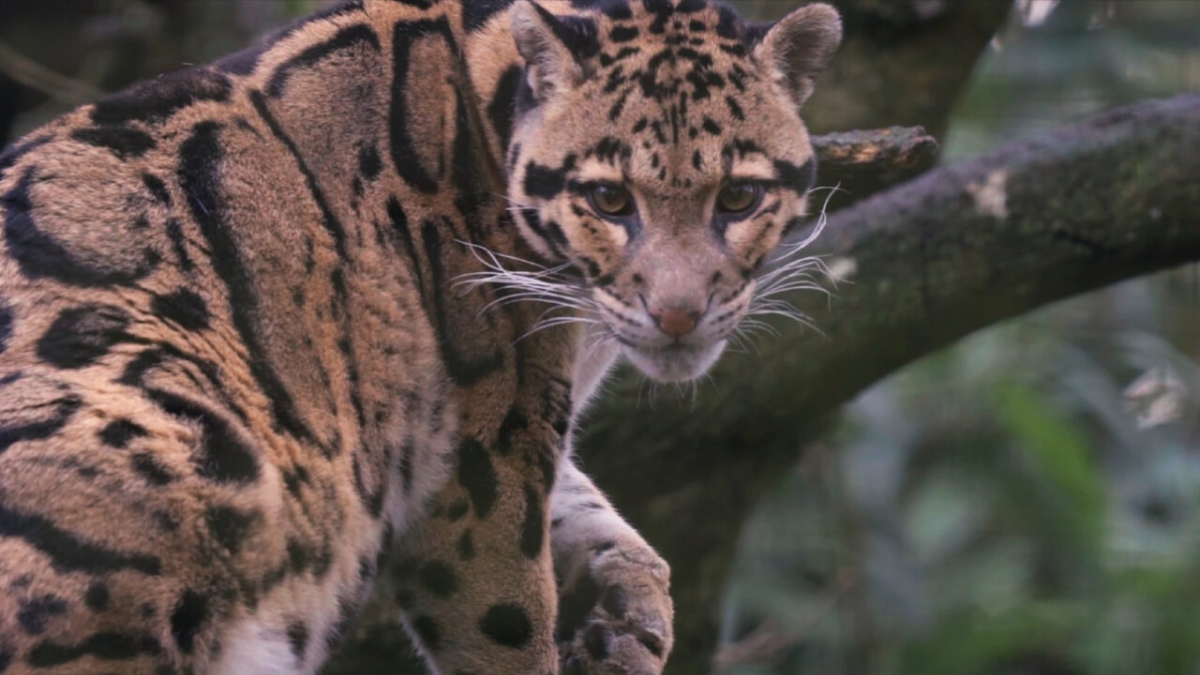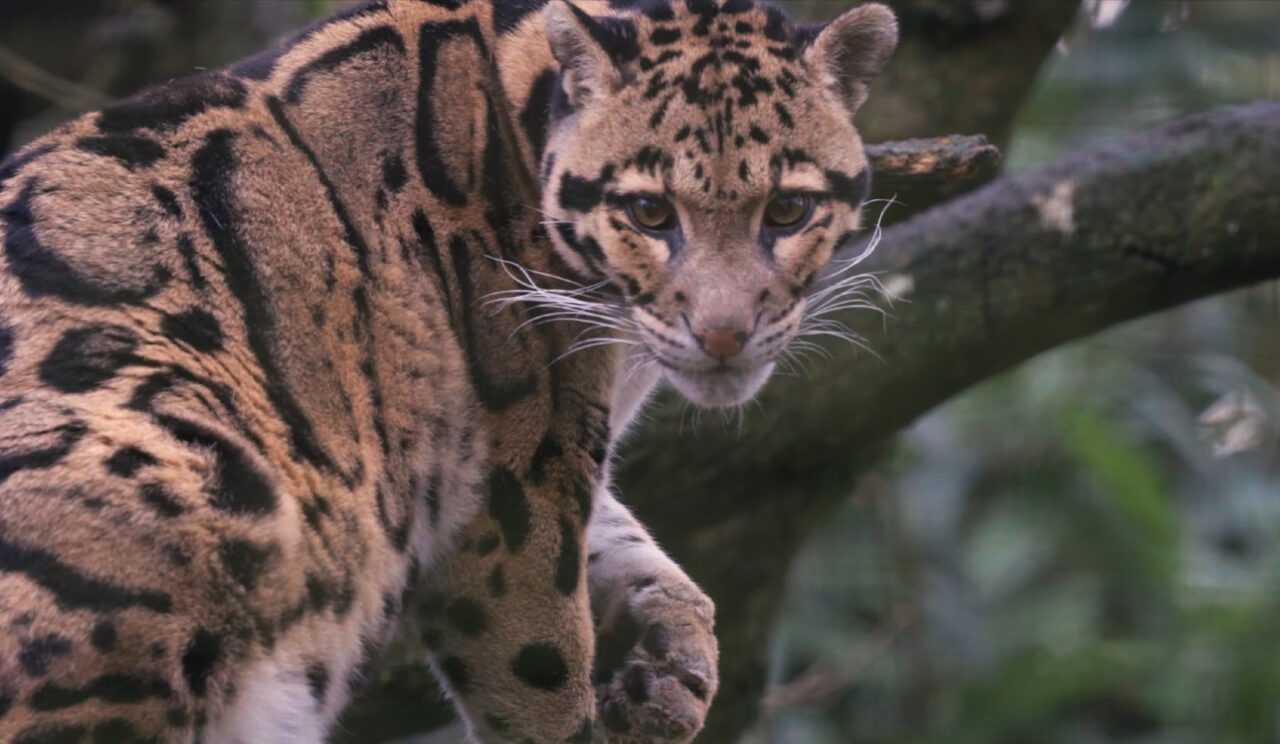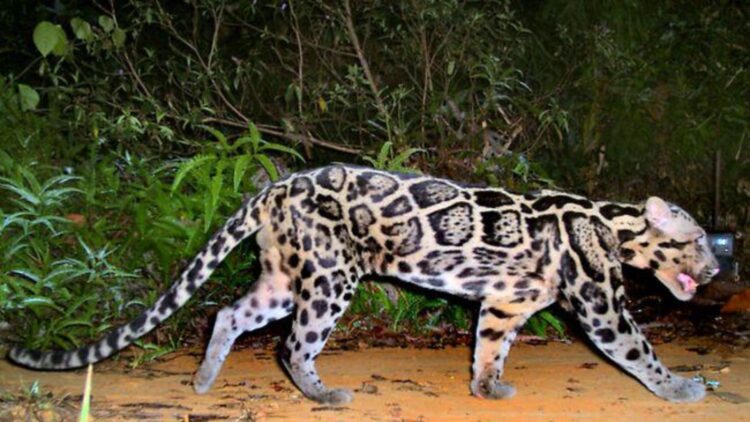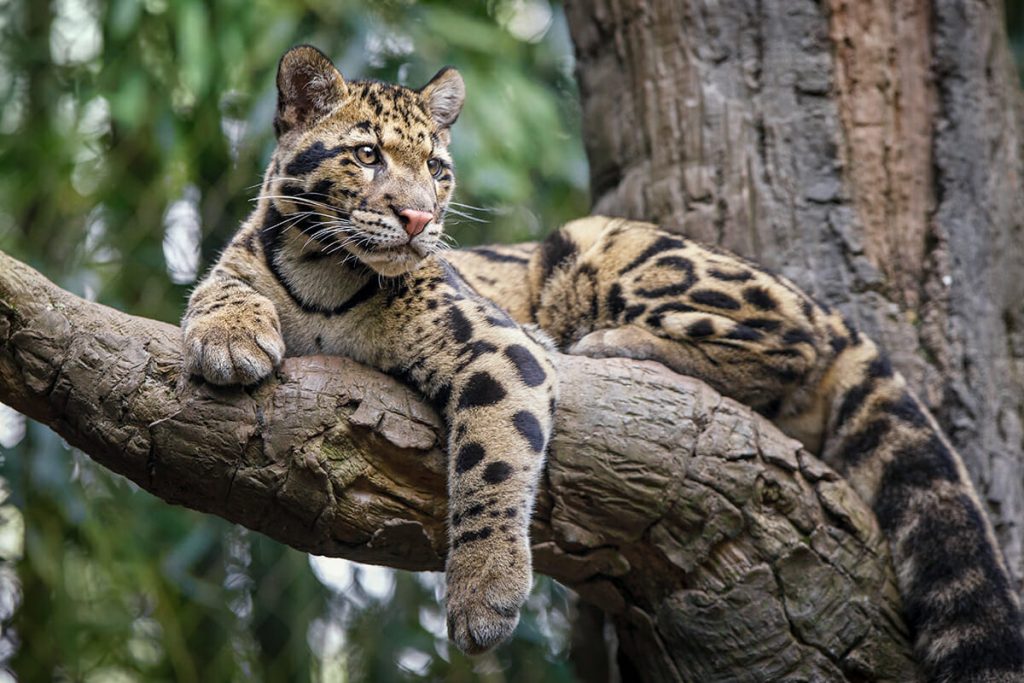📖 Table of Content:
Deep in the dense rainforests of Borneo, a rare feline has long been a mystery. It moves in the shadows, almost unseen, and little has been known about its behavior or population. But recently, this elusive creature has made headlines after being filmed in its natural habitat for the very first time. Thanks to innovative conservation efforts, experts have now been given a rare opportunity to study the Sunda clouded leopard, a species that has been difficult to monitor due to its remote and secretive nature.
The discovery of a family of these leopards is a breakthrough in wildlife conservation and offers new insight into a species that has long been one of the most endangered in the world. While this rare footage is exciting, it also highlights the ongoing need for protection and careful management of their fragile environment.
A Rare Species in the Wild
The Sunda clouded leopard is one of the least understood big cats in the world. It’s known for its beautiful, cloud-like coat, which helps it blend into the forest, and its ability to climb trees with ease. Unlike many of its big cat relatives, the Sunda clouded leopard is solitary, spending much of its time in the dense canopy of Southeast Asia’s tropical forests. Found only on the islands of Borneo and Sumatra, these cats have eluded scientists for years, with their secretive behavior making them hard to track.
As nocturnal hunters, these leopards are skilled at catching prey, such as small to medium-sized mammals, birds, and even primates. Their agility and stealth make them a formidable predator in the rainforest. However, due to their low population numbers and shrinking habitat, the Sunda clouded leopard is critically endangered. Despite this, very little has been known about how these leopards live, reproduce, and interact in the wild—until now.
First-Ever Footage of a Family in the Wild
The recent breakthrough in conservation comes from the Orangutan Foundation, in collaboration with Tanjung Puting National Park. Using camera traps set in the heart of Borneo’s rainforests, the team managed to capture the first-ever footage of a family of Sunda clouded leopards. The footage shows not just one, but multiple members of this rare species, including adults and potentially younger leopards.
This is the first time these cats have been filmed in such detail, providing a rare glimpse into their world. The discovery is an important step for scientists, as it offers new opportunities for research and helps validate that there are still populations of these leopards thriving in the wild. This footage brings much-needed attention to the species, shining a light on the importance of protecting their habitat.
Threats to the Species
While this discovery is exciting, it also brings attention to the ongoing threats that face the Sunda clouded leopard. The biggest danger to their survival is the destruction of their forest habitat. Borneo’s rainforests have been heavily impacted by logging, palm oil plantations, and agricultural expansion. As the forests are cleared, the leopards lose their homes, and the available food sources they rely on also decline.
Illegal poaching is another significant threat, as the demand for exotic animal skins and body parts continues to drive illegal hunting. Despite laws protecting the species, enforcement is difficult, and poachers continue to operate in remote areas. With only an estimated few thousand Sunda clouded leopards left in the wild, every loss puts the species closer to extinction.
Protecting the Future
This new footage of the Sunda clouded leopard is a breakthrough for conservationists working tirelessly to protect this endangered species. Camera traps and other monitoring techniques have allowed researchers to gain more insight into the leopards’ behavior, distribution, and family structures. By understanding how they live, conservationists can better protect the animals and their habitat.
Protected areas, like Tanjung Puting National Park, play a crucial role in preserving the leopards’ natural environment. However, the park alone cannot ensure the survival of the species. The continued destruction of forests and illegal activity in surrounding areas continues to threaten the leopards’ long-term survival. Stronger conservation policies, stricter enforcement against poaching, and community awareness are all key to ensuring that these rare animals can continue to roam the rainforests of Borneo.
The Role of the Public and the Global Community
The footage of the Sunda clouded leopard has sparked interest in the species, and now, more than ever, it’s crucial for the global community to take action. Awareness campaigns and fundraising efforts to protect these cats are essential in driving the changes needed to preserve their habitat. Every tree saved and every hectare of rainforest protected plays a part in ensuring that these leopards can continue to thrive.
Local communities in Borneo also have a critical role to play. By engaging with conservation programs and supporting sustainable development practices, local populations can help create a future where people and wildlife coexist harmoniously. The protection of the Sunda clouded leopard is not only about saving one species—it’s about saving an entire ecosystem.
What’s Next for the Sunda Clouded Leopard?
The new footage of the Sunda clouded leopard family is an important step forward, but it’s just the beginning. While it’s promising to know that these cats are still out there, conservationists face an ongoing challenge in preserving their environment. If the rainforests of Borneo are to survive, efforts must continue to tackle the root causes of deforestation and poaching.
The future of the Sunda clouded leopard depends on the continued collaboration between local governments, conservationists, and the public. The discovery of this rare footage has provided a moment of optimism, but it’s also a stark reminder that much work remains. With proper conservation efforts, it is possible to ensure that future generations will be able to witness the incredible beauty of these rare and elusive cats in the wild.



